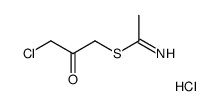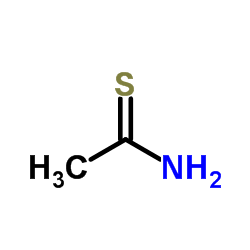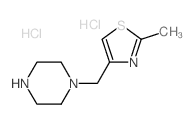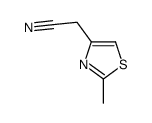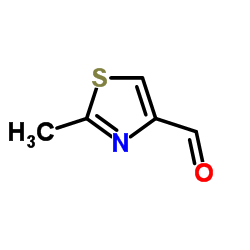77470-53-2
| 中文名 | 4-氯甲基-2-甲基噻唑盐酸盐 |
|---|---|
| 英文名 | 4-chloromethyl-2-methylthiazole hydrochloride |
| 中文别名 | 4-氯甲基-2-甲基噻唑 氯化氢 |
| 英文别名 |
BUTTPARK 452-17
4-(Chloromethyl)-2-methyl-1,3-thiazoleHCl (4-(Chloromethyl)-2-methythiazole Hydrochloride) 2-methyl-4-chloromethyl-1,3-thiazole hydrochloride 4-(chloromethyl)-2-methylthiazole monohydrochloride 4-ChloroMethyl-2-Methylthiazole hydrochloride 1GR 2-methyl-4-chloromethylthiazole hydrochloride 4-(CHLOROMETHYL)-2-METHYL-1,3-THIAZOLE HYDROCHLORIDE 2-methyl-4-(chloromethyl)thiazole monohydrochloride 4-(Chloromethyl)-2-methylthiazole hydrochloride 4-(chloromethyl)-2-methylthiazole HCl Thiazole,4-(chloroMethyl)-2-Methyl-,hydrochloride MFCD00067725 |
| 沸点 | 217.5ºC at 760 mmHg |
|---|---|
| 熔点 | 161-163 °C |
| 分子式 | C5H7Cl2NS |
| 分子量 | 184.08700 |
| 闪点 | 85.3ºC |
| 精确质量 | 182.96800 |
| PSA | 41.13000 |
| LogP | 2.99230 |
| 外观性状 | 淡黄色油状 |
| 储存条件 | 密闭于阴凉干燥环境中 |
| 稳定性 | 遵照规定使用和储存则不会分解。 |
| 分子结构 | 1、 摩尔折射率:37.10 2、 摩尔体积(m3/mol):121.2 3、 等张比容(90.2K):298.8 4、 表面张力(dyne/cm):36.9 5、 极化率(10-24cm3):14.70 |
| 计算化学 | 1.疏水参数计算参考值(XlogP):无 2.氢键供体数量:1 3.氢键受体数量:2 4.可旋转化学键数量:1 5.互变异构体数量:无 6.拓扑分子极性表面积41.1 7.重原子数量:9 8.表面电荷:0 9.复杂度:78.8 10.同位素原子数量:0 11.确定原子立构中心数量:0 12.不确定原子立构中心数量:0 13.确定化学键立构中心数量:0 14.不确定化学键立构中心数量:0 15.共价键单元数量:2 |
| 更多 | 1. 性状:无可用 2. 密度(g/mL,25/4℃):无可用 3. 相对蒸汽密度(g/mL,空气=1):无可用 4. 熔点(ºC):161-163 5. 沸点(ºC,常压):无可用 6. 沸点(ºC,5.2kPa):无可用 7. 折射率:无可用 8. 闪点(ºC):无可用 9. 比旋光度(º):无可用 10. 自燃点或引燃温度(ºC):无可用 11. 蒸气压(kPa,25ºC):无可用 12. 饱和蒸气压(kPa,60ºC):无可用 13. 燃烧热(KJ/mol):无可用 14. 临界温度(ºC):无可用 15. 临界压力(KPa):无可用 16. 油水(辛醇/水)分配系数的对数值:无可用 17. 爆炸上限(%,V/V):无可用 18. 爆炸下限(%,V/V):无可用 19. 溶解性:无可用 |
Synonym: Section 2 - COMPOSITION, INFORMATION ON INGREDIENTS
Risk Phrases: 34 Section 3 - HAZARDS IDENTIFICATION EMERGENCY OVERVIEW
Causes burns. Potential Health Effects Eye: Causes eye burns. Skin: Causes skin burns. Ingestion: Causes gastrointestinal tract burns. Inhalation: Causes chemical burns to the respiratory tract. Chronic: Not available. Section 4 - FIRST AID MEASURES Eyes: Immediately flush eyes with plenty of water for at least 15 minutes, occasionally lifting the upper and lower eyelids. Get medical aid immediately. Skin: Get medical aid immediately. Immediately flush skin with plenty of water for at least 15 minutes while removing contaminated clothing and shoes. Ingestion: Do not induce vomiting. Get medical aid immediately. Inhalation: Get medical aid immediately. Remove from exposure and move to fresh air immediately. If not breathing, give artificial respiration. If breathing is difficult, give oxygen. Notes to Physician: Treat symptomatically and supportively. Section 5 - FIRE FIGHTING MEASURES General Information: As in any fire, wear a self-contained breathing apparatus in pressure-demand, MSHA/NIOSH (approved or equivalent), and full protective gear. Extinguishing Media: Use foam, dry chemical, or carbon dioxide. Section 6 - ACCIDENTAL RELEASE MEASURES General Information: Use proper personal protective equipment as indicated in Section 8. Spills/Leaks: Vacuum or sweep up material and place into a suitable disposal container. Section 7 - HANDLING and STORAGE Handling: Do not breathe dust, vapor, mist, or gas. Do not get in eyes, on skin, or on clothing. Use only in a chemical fume hood. Storage: Store in a cool, dry place. Store in a tightly closed container. Corrosives area. Section 8 - EXPOSURE CONTROLS, PERSONAL PROTECTION Engineering Controls: Facilities storing or utilizing this material should be equipped with an eyewash facility and a safety shower. Use adequate ventilation to keep airborne concentrations low. Exposure Limits CAS# 77470-53-2: Personal Protective Equipment Eyes: Not available. Skin: Wear appropriate protective gloves to prevent skin exposure. Clothing: Wear appropriate protective clothing to prevent skin exposure. Respirators: Follow the OSHA respirator regulations found in 29 CFR 1910.134 or European Standard EN 149. Use a NIOSH/MSHA or European Standard EN 149 approved respirator if exposure limits are exceeded or if irritation or other symptoms are experienced. Section 9 - PHYSICAL AND CHEMICAL PROPERTIES Physical State: Solid Color: off-white - grey Odor: Not available. pH: Not available. Vapor Pressure: Not available. Viscosity: Not available. Boiling Point: Not available. Freezing/Melting Point: 167 - 170 deg C Autoignition Temperature: Not available. Flash Point: Not available. Explosion Limits, lower: Not available. Explosion Limits, upper: Not available. Decomposition Temperature: Not available. Solubility in water: Specific Gravity/Density: Molecular Formula: C5H7Cl2NS Molecular Weight: 184 Section 10 - STABILITY AND REACTIVITY Chemical Stability: Not available. Conditions to Avoid: Incompatible materials. Incompatibilities with Other Materials: Strong oxidizing agents, bases. Hazardous Decomposition Products: Hydrogen chloride, chlorine, nitrogen oxides, carbon monoxide, oxides of sulfur, carbon dioxide. Hazardous Polymerization: Has not been reported Section 11 - TOXICOLOGICAL INFORMATION RTECS#: CAS# 77470-53-2 unlisted. LD50/LC50: Not available. Carcinogenicity: 4-(Chloromethyl)-2-methyl-1,3-thiazole hydrochloride - Not listed by ACGIH, IARC, or NTP. Section 12 - ECOLOGICAL INFORMATION Section 13 - DISPOSAL CONSIDERATIONS Dispose of in a manner consistent with federal, state, and local regulations. Section 14 - TRANSPORT INFORMATION IATA Shipping Name: CORROSIVE SOLID, ACIDIC, ORGANIC, N.O.S.* Hazard Class: 8 UN Number: 3261 Packing Group: III IMO Shipping Name: CORROSIVE SOLID, ACIDIC, ORGANIC, N.O.S. Hazard Class: 8 UN Number: 3261 Packing Group: III RID/ADR Shipping Name: CORROSIVE SOLID, ACIDIC, ORGANIC, N.O.S. Hazard Class: 8 UN Number: 3261 Packing group: III Section 15 - REGULATORY INFORMATION European/International Regulations European Labeling in Accordance with EC Directives Hazard Symbols: C Risk Phrases: R 34 Causes burns. Safety Phrases: S 26 In case of contact with eyes, rinse immediately with plenty of water and seek medical advice. S 36/37/39 Wear suitable protective clothing, gloves and eye/face protection. S 45 In case of accident or if you feel unwell, seek medical advice immediately (show the label where possible). WGK (Water Danger/Protection) CAS# 77470-53-2: No information available. Canada None of the chemicals in this product are listed on the DSL/NDSL list. CAS# 77470-53-2 is not listed on Canada's Ingredient Disclosure List. US FEDERAL TSCA CAS# 77470-53-2 is not listed on the TSCA inventory. It is for research and development use only. SECTION 16 - ADDITIONAL INFORMATION N/A |
|
生态学数据: 该物质对环境可能有危害,对水体应给予特别注意。
|
| 危害码 (欧洲) | C: Corrosive; |
|---|---|
| 风险声明 (欧洲) | R34 |
| 安全声明 (欧洲) | S45-S36/37/39-S26 |
| 危险品运输编码 | 3261 |
|
~95% 
77470-53-2 |
| 文献:Merck Sharp and Dohme Limited; DIRAT, Olivier; ELLIOTT, Jason, Matthew Patent: WO2007/3965 A1, 2007 ; Location in patent: Page/Page column 37 ; WO 2007/003965 A1 |
|
~86% 
77470-53-2 |
| 文献:Cohen, Anita; Crozet, Maxime D.; Rathelot, Pascal; Azas, Nadine; Vanelle, Patrice Molecules, 2013 , vol. 18, # 1 p. 97 - 113 |
|
~% 
77470-53-2 |
| 文献:Journal of Medicinal Chemistry, , vol. 41, # 4 p. 602 - 617 |
| 上游产品 2 | |
|---|---|
| 下游产品 7 | |



